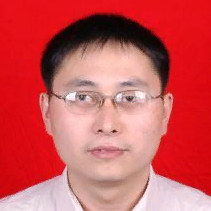
Liyun Su
Work place: School of Mathematics and Statistics, Chongqing University of Technology, Chongqing, China
E-mail: suliyun@cqut.edu.cn
Website:
Research Interests: Image Manipulation, Image Compression, Signal Processing, Image Processing, Detection Theory, Statistics
Biography
Liyun Su was born in Guang’an city, Sichuan province, Peoples’ Republic of China, in December, 1977. He received the B.S. degree in applied mathematics in 2001. The M.S’s and PH.D’s degree were received in stochastic signal processing of probability and statist ics in 2004 , 2 007, respectively, both from the College of Mathematics, Sichuan University, P. R. China. He is now a faculty member of school of mathematics and statistics of Chongqing University of Technology in China. His research interests include statistical signal processing, weak signal detection, digital image processing, financial statistics, and communication signal processing. He has published over 20 papers including 9 SCI-indexed journal papers and over 10 EI-indexed papers. He also is a council member of Chinese engineering probability and statistics society and Chongqing Operation Research society
Author Articles
Spatio-temporal Dynamic Evolution and Inhibiting Factor Analysis of TFEE in the CCTC Economic Circle
By Shiyi Zeng Liyun Su Tong Zhang Junjie Peng Xiangjing Li Feng Zhao Dongyang Qiu
DOI: https://doi.org/10.5815/ijieeb.2024.01.01, Pub. Date: 8 Feb. 2024
Accounting for 30.8% of the total economic volume of the western region by 2021, the "fourth pole" of China's economic development is progressively being established as the Chengdu-Chongqing twin-city(CCTC) Zone. Therefore, increasing Total Factor Energy Efficiency (TFEE) and reducing the disparities in energy efficiency amongst cities in the area are important for the economic development of the CCTC Economic Zone. Accordingly, this study employs an output-oriented, super-efficient DEA model with constant returns to scale to measure the total factor energy efficiency of 16 prefecture-level cities in the CCTC economic circle from 2006 to 2020. It also examines the spatial distribution and variation patterns of each city's prefecture-level total factor energy efficiency. Then, spatial autocorrelation and random forest were used to explore the interrelationship among the indicators of the drivers, and the variables were screened according to Gini importance, finally, PCA-GWR models and spatial panel regression models were constructed to dissect the key drivers. The empirical findings indicate that: (1) the average energy efficiency of Chongqing and Chengdu is only 0.708 and 0.788, and the overall efficiency shows a steady increase from 2009 to 2018. (2) The spatial distribution is mainly as follows: H-H agglomerations are distributed in the northeastern cities of the CCTC Economic Zone, L-L agglomerations are distributed in the south, H-L agglomerations and L-H agglomerations are distributed in the north-central part of Chengdu-Chongqing Economic Zone. (3) Industrial structure, population structure, and governmental behavior have significant effects on energy efficiency, with a population mortality rate as the inhibiting factor and the proportion of tertiary industry and policy behavior as the contributing factors. Based on the empirical findings, it is recommended to accelerate the industrial structure adjustment, implement the CCTC economic circle's core cities' target of energy-saving, and build a "community" bridge to improve energy efficiency and promote economic development.
[...] Read more.A Hybrid Restoration Approach of Defocused Image Using MGAM and Inverse Filtering
By Fenglan Li Liyun Su Yun Jiang Min Sun
DOI: https://doi.org/10.5815/ijigsp.2013.08.03, Pub. Date: 28 Jun. 2013
A novel hybrid restoration scheme of defocused image is presented, which uses multivariate generalized additive model (MGAM) which is a nonparametric statistical regression model with no curse of dimensionality and inverse filtering (InvF). In this algorithm, firstly the five features of wavelet domain in defocused digital image, which are very stable relationship with the point spread function (PSF) parameter, are extracted by training and fitting a multivariate generalized additive model which is to estimate defocused blurred parameter. After the point spread function parameter is obtained, inverse filtering, which is needed to known the point spread function and a non-blind restoration method, is applied to complete the restoration for getting the true image. Simulated and real blurred images are experimentally illustrated to evaluate performances of the presented method. Results show that the proposed defocused image hybrid restoration technique is effective and robust.
[...] Read more.Noisy Image Decomposition Based On Texture Detecting Function
By Ruihua Liu Ruizhi Jia Liyun Su
DOI: https://doi.org/10.5815/ijigsp.2012.03.03, Pub. Date: 8 Apr. 2012
At present, most of image decomposition models only apply to some ideal images, such as, noise-free, without blurring and super resolution images, and so on. In this paper, they propose a novel decomposition model based on dual method and texture detecting function for noisy image. Firstly, they prove the existence of minimal solutions of the noisy decomposition model functional. Secondly, they write down an alterative implementation algorithm. Finally, they give some numerical experiments, which show that their model can effectively work for Gaussian noisy image decomposition.
[...] Read more.Other Articles
Subscribe to receive issue release notifications and newsletters from MECS Press journals